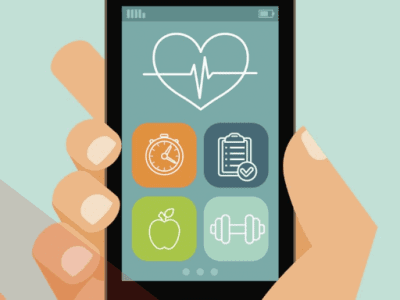Touch is becoming a key embedded feature of almost every electronic device that is available in the market. From the era of single touch, the market is now evolving towards multi-touch. When compared with  single touch technology, multi-touch technology devices are able to
single touch technology, multi-touch technology devices are able to  accept multiple inputs at the same time via a touchscreen. Though, touch technology has existed in the market since the 1980s, it gained significant momentum after the launch of the Apple iPhone. Today, touch is a major human interface for products such as computers and mobile phones.
accept multiple inputs at the same time via a touchscreen. Though, touch technology has existed in the market since the 1980s, it gained significant momentum after the launch of the Apple iPhone. Today, touch is a major human interface for products such as computers and mobile phones.

Types of Touch Technologies
- Resistive touch technology
- Capacitive touch technology
- Dispersive signal touch technology
- Acoustic touch technology
- Infrared touch technology
- Optical touch technology
Resistive and capacitive technology based touch screens are the most widely used and are deployed in a wide range of applications such as entertainment, gaming, hospitality, retail etc.
Multi-touch Technology
Multi-touch technology based touch screens provide an intuitive human-computer interface that has the ability to eliminate conventional input devices such as keyboards, mice etc. This superior technology now allows multi-user experience, which was previously not possible. By using multi-touch one can easily paint, sketch and zoom on display screens.
Just as in the case of single touch screens, a similar trend is being noticed in multi-touch screens as well where resistive and capacitive technology multi-touch screens are most commonly used. Though resistive technology multi-touch screens account for a major share of the market, capacitive technology screens are expected to drive future market growth. The biggest advantage associated with capacitive technology multi-touch screens is that they do not require pressure to activate when compared with resistive technology multi-touch screens. Capacitive multi-touch screens are now being deployed in high-end devices such as tablets and smartphones.

When we plotted the two multi-touch screen technologies on a standard product lifecycle ‘S’ curve, we found that resistive multi-touch technology is more mature as compared to capacitive multi-touch technology. Low cost and ease of implementation are the key benefits provided by resistive touch screens, but these are often affected by the wear and tear caused by the application of pressure over a period of time.
Tablet PCs that uses capacitive multi-touch technology screens are expected to significantly impact the multi-touch market. For instance, within the first week of their launch, Apple sold 1 million and 3 million units of iPad2 and iPad3, respectively. These developments are expected to spur the touch and multi-touch market to new highs.
Future Outlook
As per industry estimates the global multi-touch screen market is expected to grow at a CAGR of around 19% for the period 2011-2016.
The ability to offer a true-to-life user experience by accepting multiple inputs at the same time via a simple ‘gesture’ as against a physical touch will see multi-touch screens being deployed in greater numbers. For instance, Micromax recently unveiled their latest smartphone A85 Superfone that supports multi-tasking along with high quality console gaming that was not possible earlier on single touch screens.
In a related development with significant implications for the electronics, computer hardware and mobile device industry, Qualcomm recently acquired certain assets of GestureTek, a company that has been developing gesture recognition technology for about 25 years. These intellectual property (IP) assets will be integrated into Qualcomm’s Snapdragon processors. So, smartphone and tablet manufacturers will be able to launch devices featuring gesture control interface.
Gesture control has recently evolved into television sets too with some screens that recognize gesture control already available in the market, such as those from Hitachi and Toshiba. On the PC front, Microsoft has recently added touch capabilities to the Windows 8 operating system. And now coming to smaller devices, this technology is likely to see adoption on a mass scale at a level where gestures are generally employed in natural human settings.
Apart from being a trendy, new interface for users to interact with their devices, we can definitely expect to see new applications coming up. One of the areas that we feel will be an early adopter is of emotions. We first used simple text messages for expressing emotions, and then added emoticons, a picture, a sound clip or a movie clip, and now this is expected to graduate to gestures.
Attempting a contactless interface option is not a new concept. We have many voice enabled (‘open sesame!’) type controls for devices, which often do not operate smoothly because of accent, ambient noise, disturbances etc. Gesture control technology definitely does not face such an issue. So far it is running successfully for television sets and the same results should be visible in smaller devices.
With Qualcomm setting the trend, gesture control is expected to be the next ‘hit’ human-machine interface after touch technology. Interesting to watch would be Apple’s response to this development, as this a very apt technology to adopt for the vendor and extend their gadget chain starting from iPods, iPhones and iPads to television screens (perhaps to be re-christened as the ‘iWall’!)












